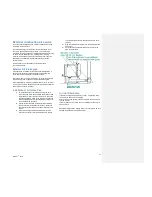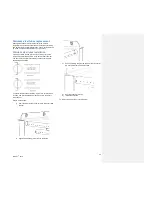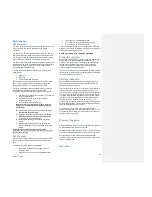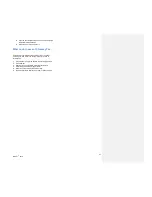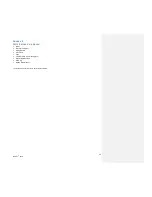
25
March 1
st
, 2015
Maintenance.
Ash Removal.
The wood burning make some residual called ash and must be
remove from the combustion chamber to help oxygen
circulation
The ash have to be removed periodically every 2 or 3 days into
heavy warming period. Never had excessive accumulation into
the combustion chamber because it can reduce performances
of your stove by diminish the air circulation between logs.
The best time to remove ash is after a long warming period like
morning when the stove is relatively cold enough to manipulate
ash and the chimney is yet hot. The hot chimney draft will
vacuum the dust inside the stove.
To clean combustion chamber from ash you must have the
following tool.
•
Ash shovel
•
Ash brush.
•
A metal bucket with airtight lid.
Some embers is mix with ash and still lit a few hours or a few
days. Is very important than the metal lid was airtight. The
bucket must be put on a non-combustible tile or brick.
The stove is equipped with an ash drawer and it closed by a
cast plug with a fiberglass cord. The plug is into the
combustion chamber between two brick in front of the stove.
1) Remove with the shovel the most ash you can and put
it into the metal bucket
2) Remove with the ash brush embers and ash
recovering the plug.
3) Turn clockwise the plug and pull it.
Warning: if the fire is extinguish recently, the plug
must be hot. Use isolated mitt or a plier to turn and
pull the plug.
4) Push embers and ash into the ash drawer. Do not
overcharged the ash drawer.
5) Empty the ash drawer into the Metal bucket. Never
left ash and embers into the ash drawer. Some
embers can be lit and make fumes.
6) Clean around the plug to be sure the plug will be
airtight.
7) Reinstall plug by pushing it into the hole and turn
counter clockwise to lock it in place and be sure it is
airtight.
A plug leakage can let pass oxygen and reduce the
combustion time. Please inspect the plug seal and change it if
you note some damage.
Ash Disposal.
Some embers is mix with ash and can still lit. If embers have
enough oxygen it can still lit some hours and so some few
days.
It’s mandatory to store ash pending disposal:
•
Into a metal container with an airtight metal lid
correctly closed
•
Outside the house on a non-combustible material.
•
Far enough any combustible material.
•
Far enough any inflammable liquid and vapor.
•
Enough long to be thoroughly cooled.
If the ash are disposed of by burial in soil or otherwise locally
dispersed, they should be retained in the closed container until
all cinders have thoroughly cooled.
NEVER PUT TRASH INTO THE ASH CONTAINER
Creosote Formation.
When wood is burning slowly, it produces tar and other organic
vapors, which combine with expelled moisture to form
creosote. The creosote vapor condense in the relatively cool
chimney flue of a slow-burning fire As a result, creosote
residue accumulates on the flue lining, When ignited this
creosote makes an extremely hot fire
The chimney connector and chimney should be inspect at least
once every two months during the heating season to determine
if a creosote buildup has occurred.
Chimney Inspection.
Wood moisture, wood species, the combustion quality, are
some factors that can influence creosote buildup speed into
chimney and chimney connector.
The chimney and the chimney connector must be inspected at
least one every two month during the warming season. You
can call a Chimney sweeper to evaluate the creosote formation
or you can do it yourself by extinguish the wood stove, wait for
cool down. Then unscrew the chimney connector and inspect
the chimney connector and the factory build chimney with a
spot light to see if a creosote buildup as occurred. For a
masonry chimney insert a mirror in the cleanout opening at the
bottom at the bright day. For an outdoor factory build chimney
open the cap at the bottom of chimney.
A 1/8 inches (3 mm) or more creosote buildup, smaller
apparent diameter and if you cannot see the chimney cap. It’s
a sign that is time to sweep your chimney connector and your
chimney to remove creosote.
Chimney Sweeping.
Chimney Sweeping need a special tool like some fiberglass rod
an adapted diameter brush and some rope
Sweeping chimney also requires to climb on the roof to remove
the chimney cap and sometime a too high chimney section too.
We recommend to call a Professional chimney Sweeper
certified by APC in Quebec, the WETT in the rest of Canada or
by NFI in United States.
Door care.











